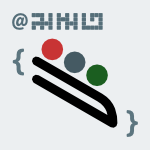Travelled to:1 × Austria
1 × Canada
1 × China
1 × France
1 × Russia
1 × Spain
2 × India
2 × Italy
4 × USA
Collaborated with:I.Kwan S.Marczak K.Blincoe A.Schröter E.Knauss J.Cleland-Huang J.Aranda M.Petre A.Finkelstein J.Chisan E.Kalliamvakou F.Harrison G.Valetto A.Borici S.L.Lim G.Poo-Caamaño T.Wolf T.H.D.Nguyen U.Stege J.Sheoran J.Ell R.Helms B.Koelewijn M.Paasivaara C.Lassenius P.Räty G.Gousios L.Singer D.M.Germán D.M.Berry D.C.Gause R.Hall A.Wassyng
Talks about:requir (11) engin (7) communic (6) softwar (4) network (4) social (4) role (4) use (4) do (4) collabor (3)
♀ Person: Daniela Damian
 DBLP: Damian:Daniela
DBLP: Damian:Daniela
Facilitated 1 volumes:
Contributed to:
Wrote 21 papers:
- MSR-2015-BlincoeHD #ecosystem #git #identification #using
- Ecosystems in GitHub and a Method for Ecosystem Identification Using Reference Coupling (KB, FH, DD), pp. 202–211.
- FSE-2014-PetreD #question #re-engineering
- Methodology and culture: drivers of mediocrity in software engineering? (MP, DD), pp. 829–832.
- MSR-2014-KalliamvakouGBSGD #git #mining
- The promises and perils of mining GitHub (EK, GG, KB, LS, DMG, DD), pp. 92–101.
- MSR-2014-SheoranBKDE #comprehension #git
- Understanding “watchers” on GitHub (JS, KB, EK, DD, JE), pp. 336–339.
- ESEC-FSE-2013-BlincoeVD #coordination #dependence #identification
- Do all task dependencies require coordination? the role of task properties in identifying critical coordination needs in software projects (KB, GV, DD), pp. 213–223.
- ICSE-2013-DamianHKMK #communication #coordination
- The role of domain knowledge and cross-functional communication in socio-technical coordination (DD, RH, IK, SM, BK), pp. 442–451.
- ICSE-2013-KnaussD #communication #named #online #requirements
- V: ISSUE: LIZER: exploring requirements clarification in online communication over time (EK, DD), pp. 1327–1330.
- ICSE-2013-PaasivaaraLDRS #agile #distributed #education #re-engineering #student #using
- Teaching students global software engineering skills using distributed scrum (MP, CL, DD, PR, AS), pp. 1128–1137.
- CSCW-2012-SchroterADK #communication
- To talk or not to talk: factors that influence communication around changesets (AS, JA, DD, IK), pp. 1317–1326.
- MoDELS-2012-ArandaDB #modelling #question #what
- Transition to Model-Driven Engineering — What Is Revolutionary, What Remains the Same? (JA, DD, AB), pp. 692–708.
- RE-2012-KnaussDPC #detection #requirements
- Detecting and classifying patterns of requirements clarifications (EK, DD, GPC, JCH), pp. 251–260.
- ICSE-2011-KwanD #communication
- The hidden experts in software-engineering communication (IK, DD), pp. 800–803.
- ICSE-2011-LimDF #identification #network #requirements #social #using
- StakeSource2.0: using social networks of stakeholders to identify and prioritise requirements (SLL, DD, AF), pp. 1022–1024.
- RE-2011-Cleland-HuangD #exclamation #requirements
- Ready-set-transfer! Technology transfer in the requirements engineering domain (JCH, DD), pp. 327–328.
- RE-2011-MarczakD #collaboration #communication #how #interactive
- How interaction between roles shapes the communication structure in requirements-driven collaboration (SM, DD), pp. 47–56.
- ICSE-2009-WolfSDN #analysis #communication #developer #network #predict #social #using
- Predicting build failures using social network analysis on developer communication (TW, AS, DD, THDN), pp. 1–11.
- RE-2008-MarczakDSS #network #social
- Information Brokers in Requirement-Dependency Social Networks (SM, DD, US, AS), pp. 53–62.
- RE-2007-DamianMK #collaboration #distance #network #social
- Collaboration Patterns and the Impact of Distance on Awareness in Requirements-Centred Social Networks (DD, SM, IK), pp. 59–68.
- RE-2007-KwanMD #requirements
- Viewing Project Collaborators WhoWork on Interrelated Requirements (IK, SM, DD), pp. 369–370.
- RE-2005-BerryDFGHW #question #requirements #why
- To do or not to do: If the requirements engineering payoff is so good, why aren’t more companies doing it? (DMB, DD, AF, DCG, RH, AW), p. 447.
- RE-2005-ChisanD #requirements #risk management
- Exploring the role of requirements engineering in improving risk management (JC, DD), pp. 481–482.


















